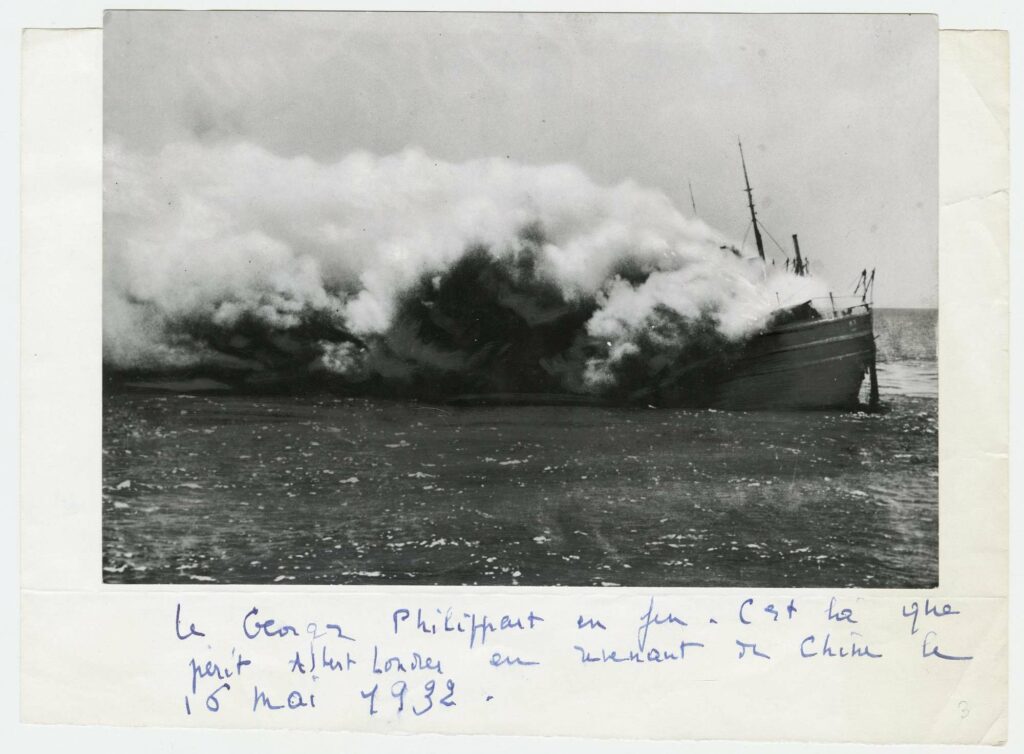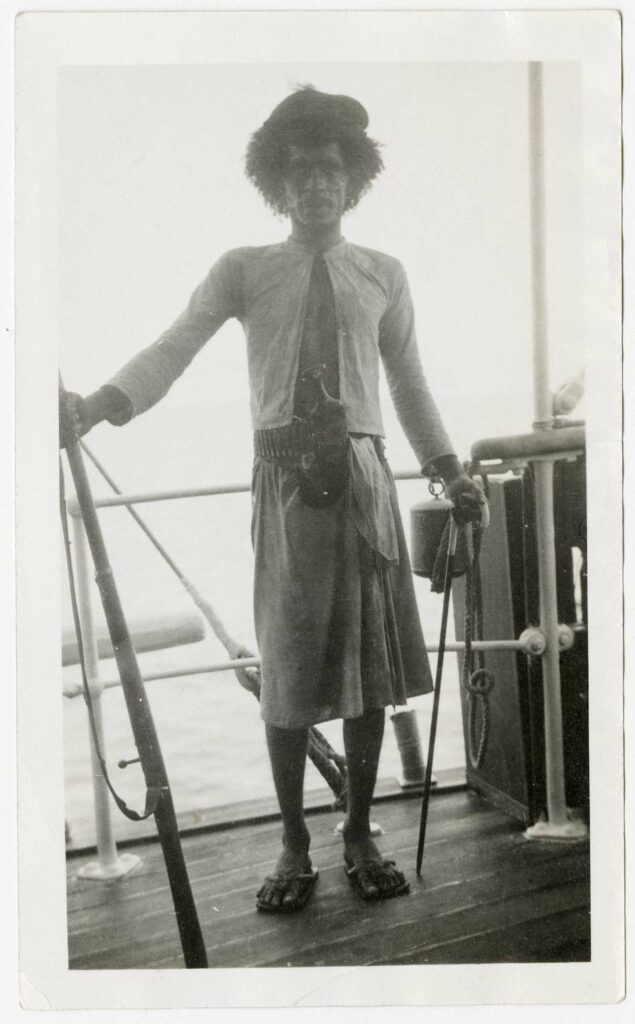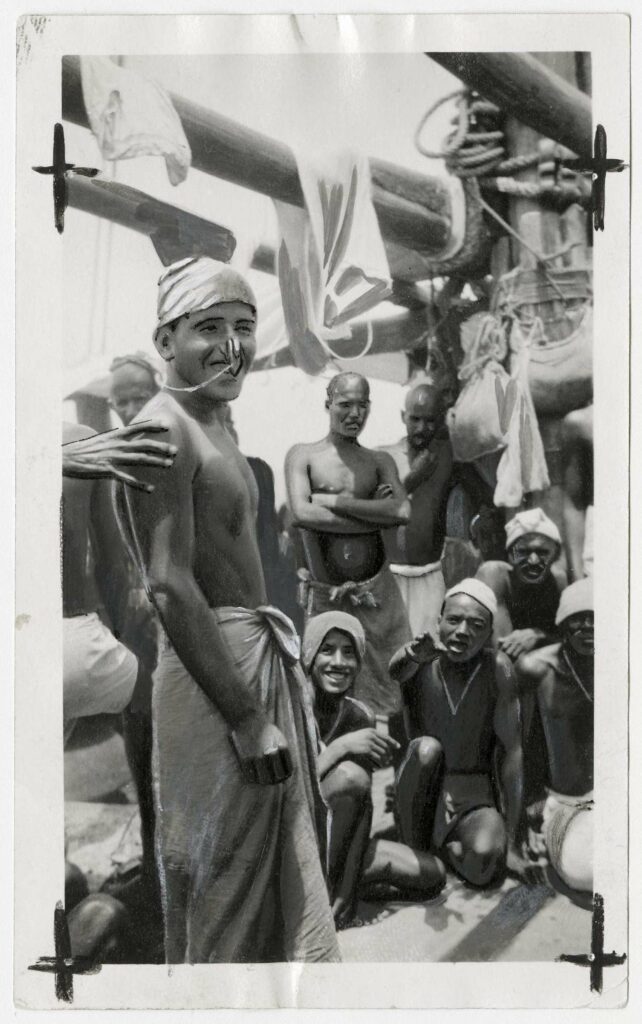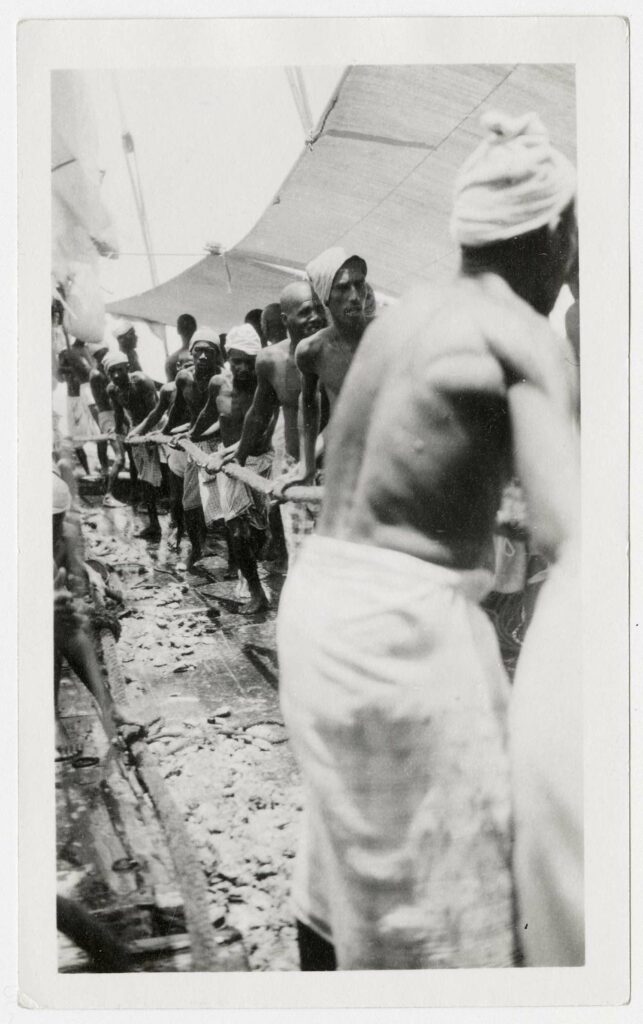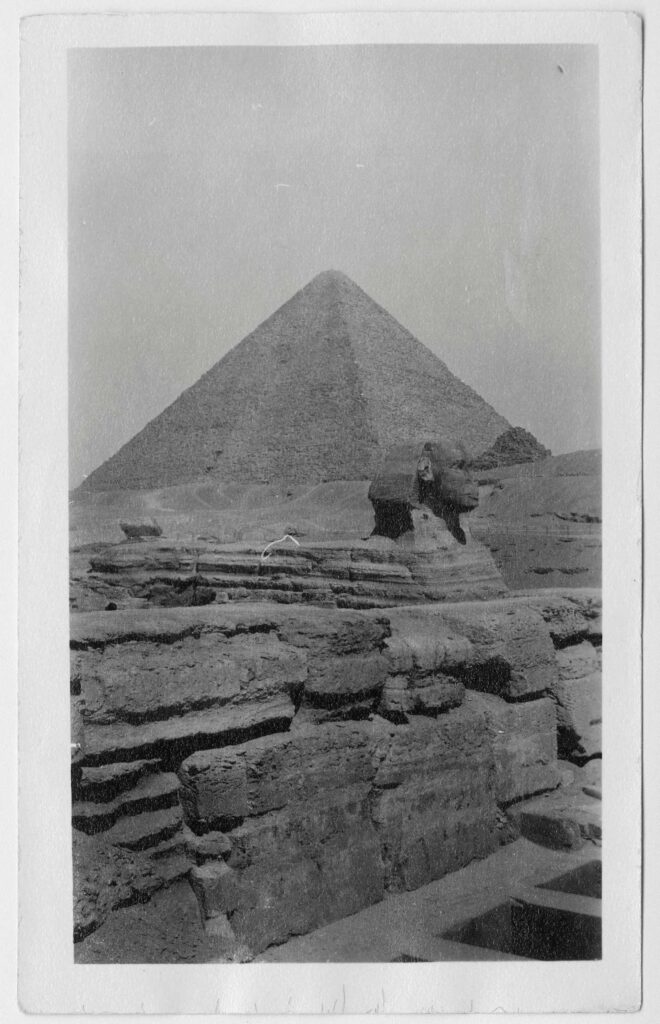“On the pirate coast. I was photographing them… My camera trembled.” The words, suspended at the tip of the pen, were written by Albert Londres during a trip to Saudi Arabia, in his report Pêcheurs de perles [Pearl Divers]. Word becomes image. Born in 1884, Londres wrote the way one pulls a trigger, the nib hits bull’s eye. “The job of a journalist is not to please or cause damage; it is to point the pen at the wound,” he said.
The great French reporter, with his neat beard and his well-tailored suit, told the story of the world until he tragically perished in the fire of the ship that was bringing him back from an assignment in China, on May 16, 1932. He was 47.
Ninety years later, the annual Bayeux Calvados-Normandy Award, which honors photojournalists and war correspondents from around the world, pays tribute to this illustrious ambassador of the profession through a little-known facet of his work: his photographs. For, while his well-crafted reports are the gold standard, his pictures, precious documents of history, had long been forgotten.
Casablanca, souk and mysterious envelope
“This was staring us in the face for quite a while. It’s incredible it took us this long to take a closer look at Albert Londres’s relationship with the image,” says Hervé Brusini, curator of the exhibition and president of the annual Albert Londres Award, which recognizes the best French-language news stories (the written press, audiovisual, and book awards).
The exhibition of a portion of the Albert Londres collection, comprising nearly 800 prints, is unprecedented. This is all the more true that a large number of the photographs were found in novel-worthy circumstances. In the 1960s, a young French teacher, Didier Folléas, stumbled upon a mysterious envelope in a Casablanka souk. It contained 150 photos. On the back, a signature: “London.” By cross-checking the reporter’s writings, Folléas was sure: these were indeed photographs Londres took during his trip to Africa in 1928.
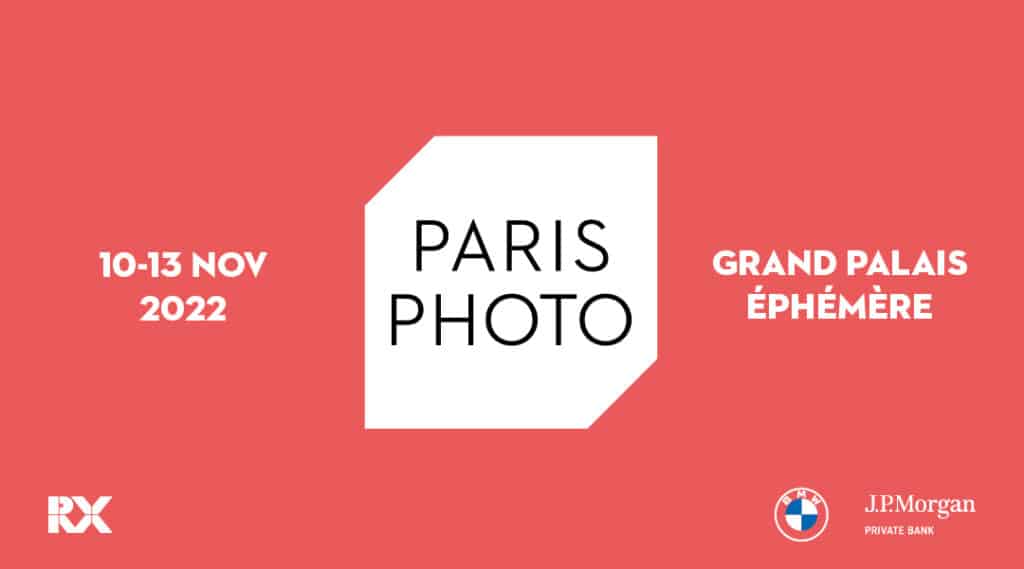
The photographs denounced the death of 17,000 Africans during the construction of the Congo Océan railroad by the French construction company Batignolles. “If the Minister of the Colonies does not believe me, I will put the photos at his disposal,” he wrote to the French government official. Thus the image becomes a proof of the inhuman working conditions.
Yet, as the exhibition Albert Londres et l’Image shows us, the man and his times had a rather fraught relationship with photography. “Londres’s first piece of writing was a gauntlet thrown down to photography,” said Hervé Brusini.
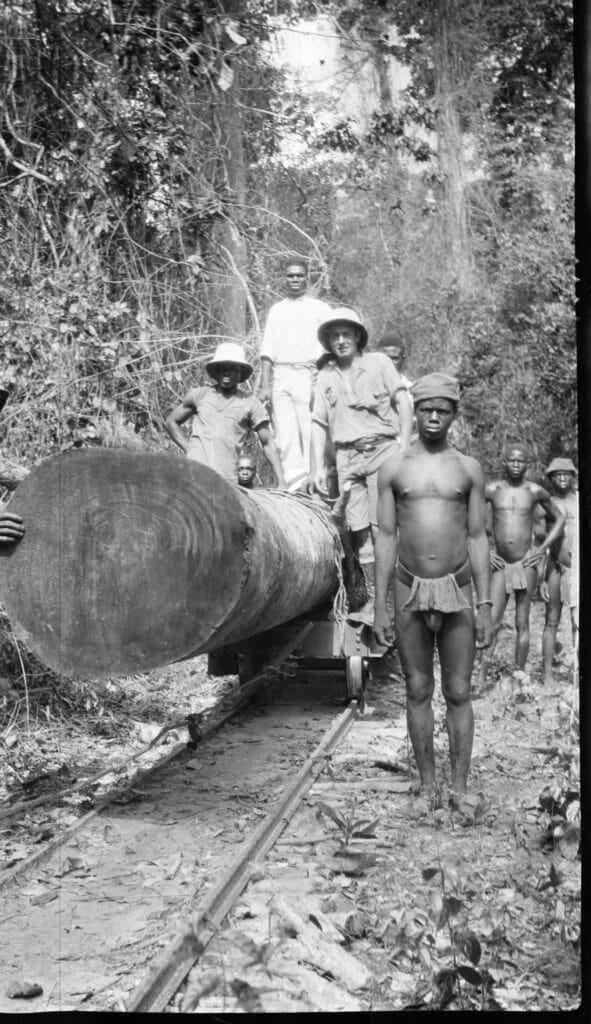
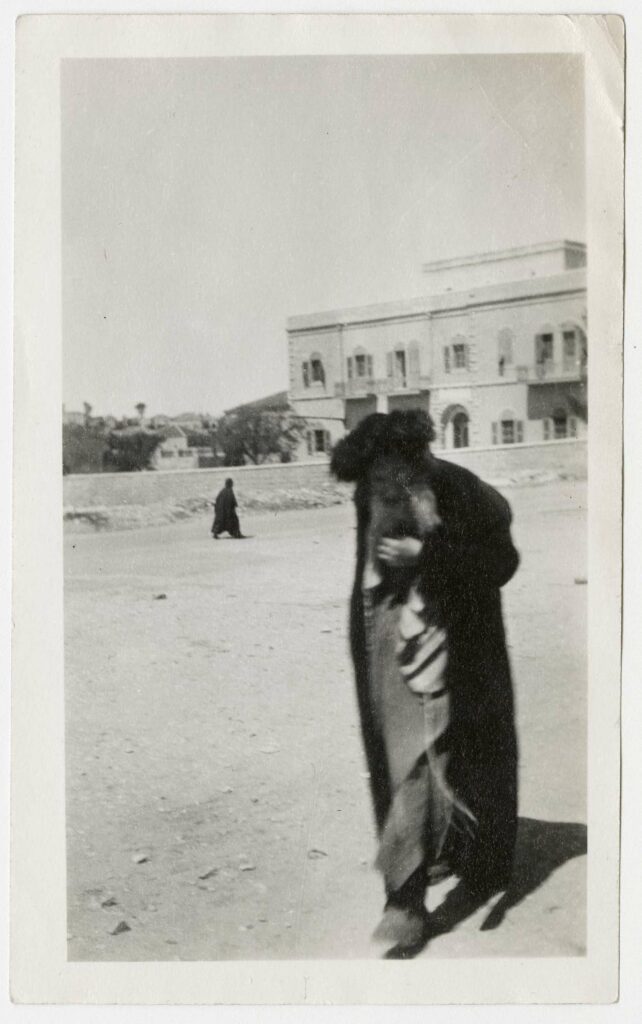
Photography, the unloved
September 19, 1914: the Reims cathedral was being shelled by the Germans. Londres, then a political journalist in Paris, was dispatched to the scene. His report is heart-wrenching. This was his first exploit. “Londres was a poet who made the reader see things, his writing is very pictorial. He photographed with his pen,” says the curator.
At one point the reporter jotted down these lines: “Photographs will tell you nothing of his condition. Photographs won’t give you the skin tone of the dead. You will really weep only when facing [the cathedral of Reims], when you come here on a pilgrimage.”
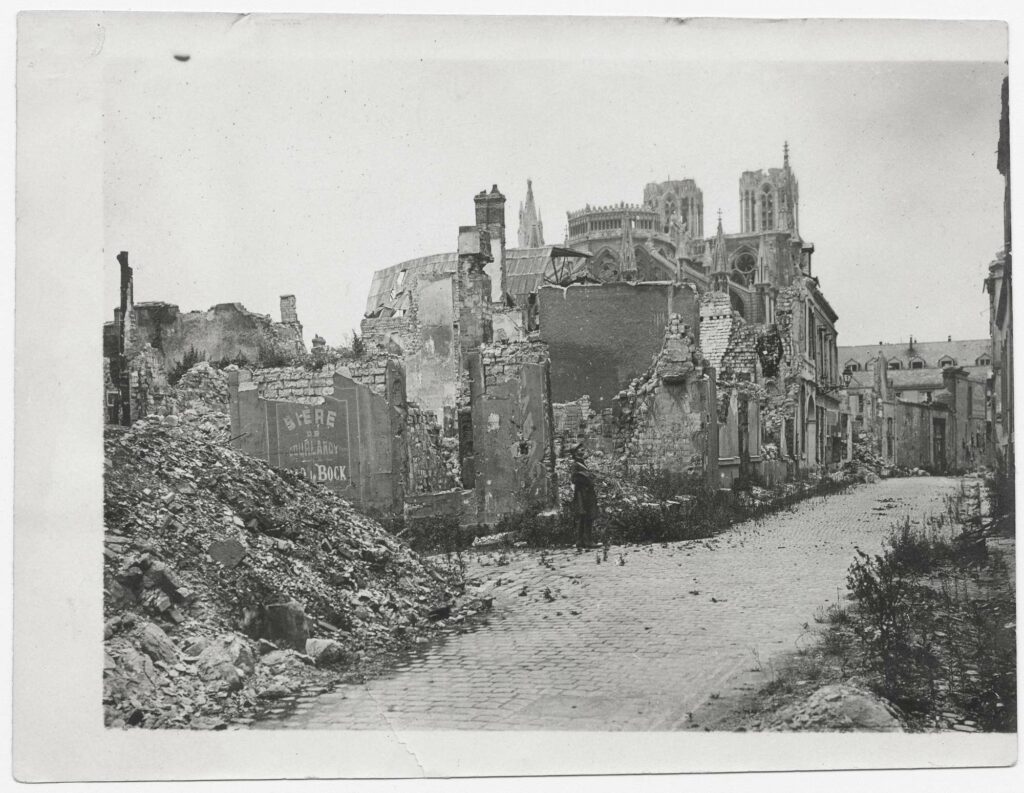
These words reflect a time when photography did not enjoy good press. “It was 1914: people thought that the photo generated by a camera, a machine, was an image without any added value. Whereas a draftsman transmitted his vision through his artistic gesture, the photographer only took the shot; after all, anyone could do it,” explained Hervé Brusini.
People were wary of the image, especially since retouching services already existed. “With gouache and India ink, retouching heightened the contrast in the photograph, but also removed elements from the image.” The front pages of newspapers, such as Le Matin, Le Petit Parisien, L’Excelsior, Salut Public… were filled with drawings. In the field, Londres was most often accompanied by his friend, the draftsman Georges Rouquayrol.
But the photograph gradually came to take the place of the drawing. Some newspapers, such as L’Excelsior, began to use photographic images, promising not only to “tell the news, but also to show it.” The weight of words was reinforced by the shock of photos. Albert Londres came to grasp the importance of images. He wanted to travel with several cameramen to film his subjects. Cameras were too cumbersome, too expensive, he was told. Ahead of his time, he turned to the still-image camera: lighter, more practical, more discreet.
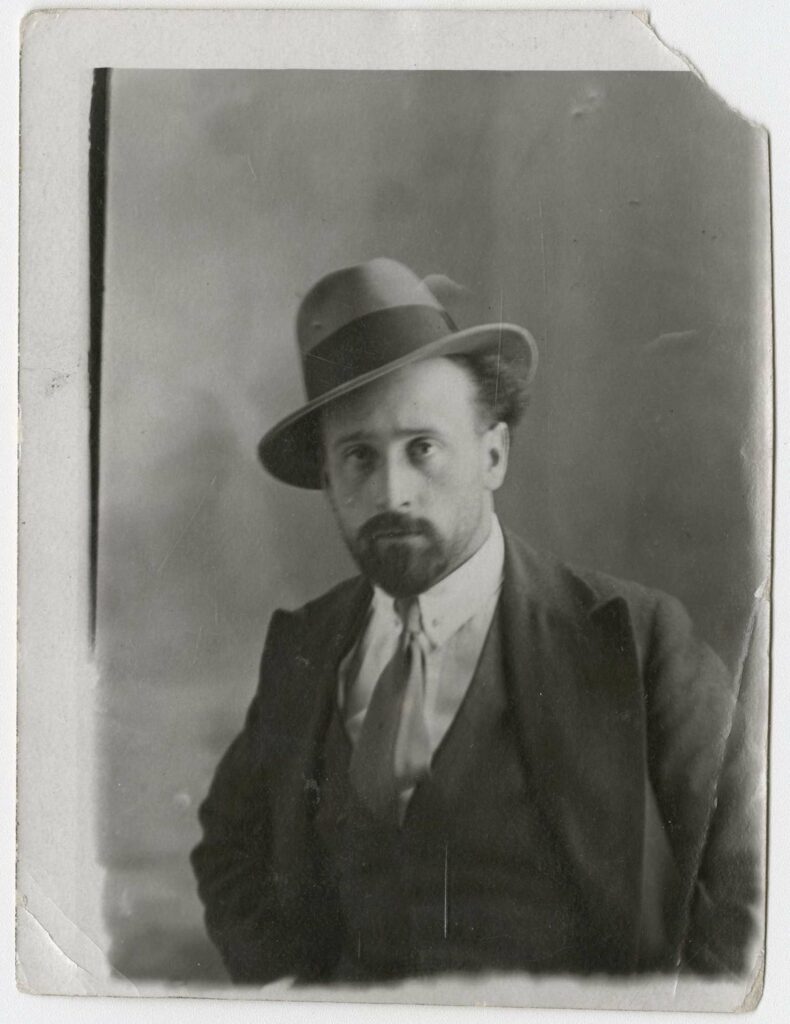
Image as “evidence”
A camera around his neck, Albert Londres is seen running along the deck of a boat. This scene was immortalized in a film shot in December 1919 off the coast of Beirut. This is the first time we can see a journalist using a camera. The published report included fifteen photos featured on the front page of L’Excelsior, captioned “photos by our special correspondent.” Who introduced Albert Londres to photography? We don’t know. What camera did he use? According to Hervé Brusini, “surely a Kodak Vest Pocket, it was the simplest camera to use at the time.”
Albert Londres’s reporting shifted towards investigation, and photography became a witness. “Albert Londres’s work turned into commitment and a fight for the truth. And in this fight, the image would end up playing a decisive role,” asserts the president of the Albert Londres Award. “For Albert Londres, photography is both image-as-note-taking and image-as-evidence.”
Glass plates taken by the photographer Jeannin show the journalist at work in French Guiana, a notebook in hand and his clothes without a crease. Largely thanks to the pictures taken on the go, Londres went on to denounce the horrors of the penal colony of Cayenne.
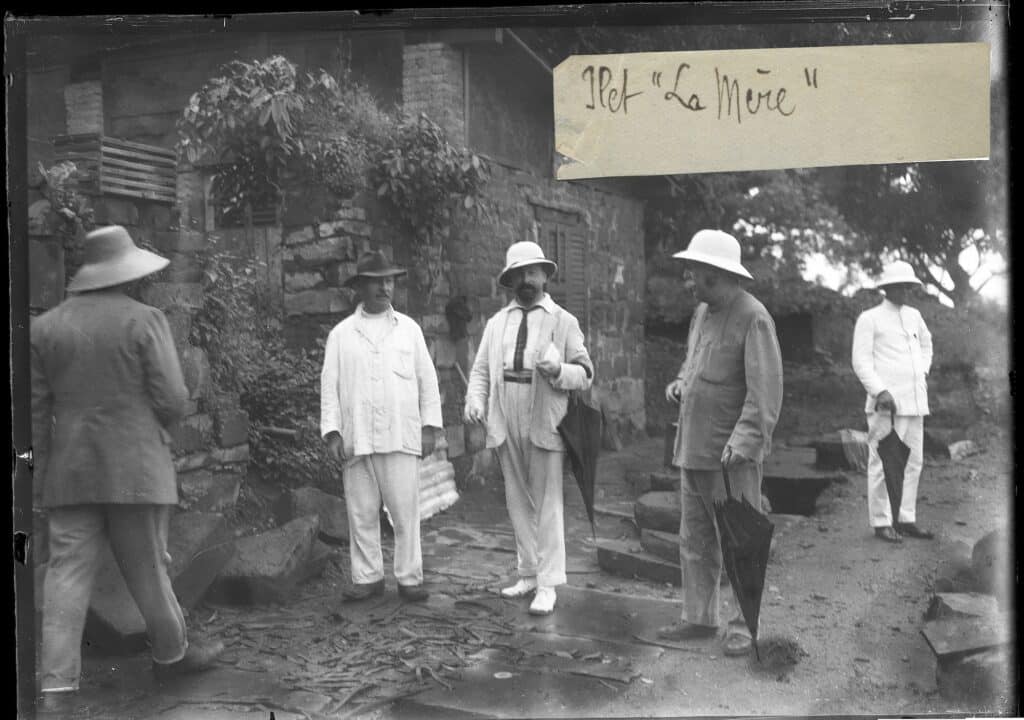
The vintage material exhibited in Bayeux tells the story of war reporting in the early twentieth century. “It was a time when the profession wanted to move toward real-time, instant image, yet without having the means,” explains Hervé Brusini. Londres grasped the potential of the image. His contemporary, the writer Pierre Mac Orlan, similarly prophesied in 1928, “in 25 years, all reporters will know how to handle a camera.”
This photographic journey to the origins of news reporting is very stirring: rare snapshots of remote corners of the world captured by Londres’s eye and pen. These images inevitably bring us back to the current times of mistrust of information. “We are very unsettled by digital technologies, and suspicious even of the profession of journalism, of the veracity and the very necessity of information. These are deadly questions for democracy,” notes Hervé Brusini. “This exhibition aims to show that, already for Albert Londres, both the image and the word had this same objective, a shared ambition to serve the truth.”
Bayeux Calvados-Normandy Award Festival. “Albert Londres et l’image”, Exhibition until November 13, 2022.
